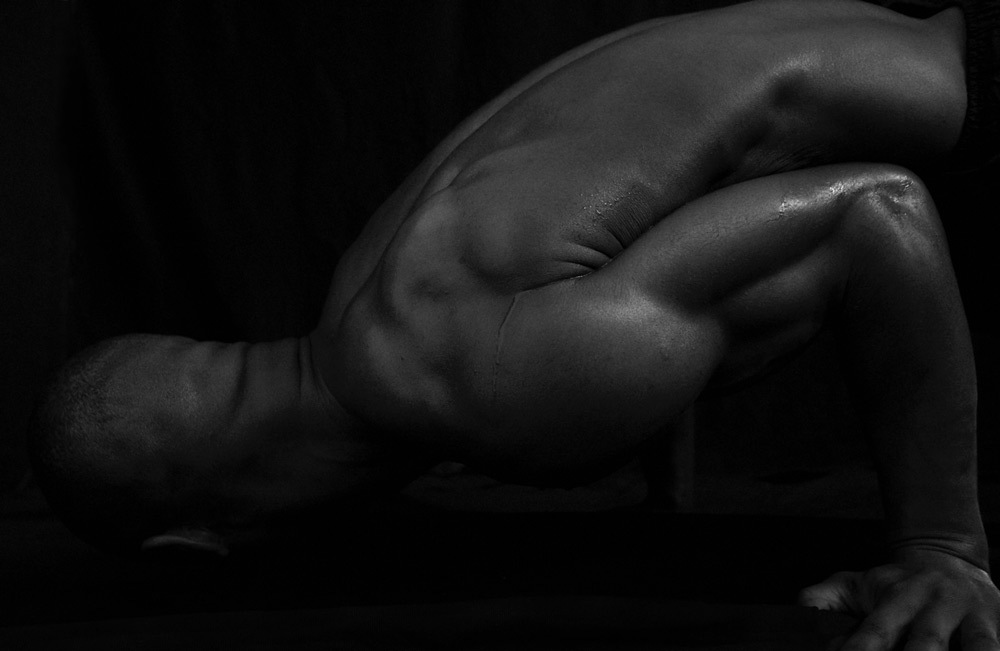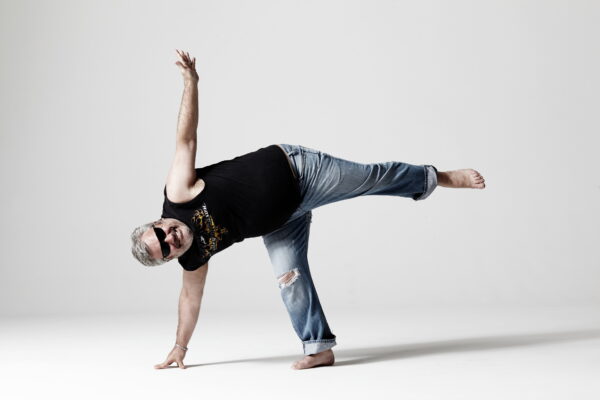FG Founder Michele Pernetta takes a look at the benefits you can expect from your hot yoga practice, and what to be aware of before you start.
I've been teaching Hot Yoga for over 20 years and have found that nearly all practitioners, even those with health issues, enjoy enormous benefits from exercising in the heated room.
However, there are sensible precautions you can take as with any new form of exercise. I believe some hot yoga studios overdo the heat which can increase potential side effects. Running at temperatures of 110-120 degrees and not managing humidity and oxygenation correctly can cause dehydration and overheating. However, hot yoga taught by experienced instructors, in a room heated to between 35 - 38° C / 95 - 100° F (as we do at FG), with good oxygenation and humidity and experienced instructors has some benefits that regular yoga can’t necessarily claim.
Any potential side effects of the hot room can easily be avoided. If you are out of shape or even working too hard while acclimatizing, you can feel dizzy, nauseous, lightheaded, get cramp or simply get out of breath. Most of these issues are not dangerous. You just need to sit down, drink and breathe through the nose.
TIPS
- We don't expect newcomers to work to their maximum..so start at your own pace, sit down whenever you need to and breathe through your nose not your mouth.
- Drink 2 litres of water 2 hours before you arrive so you're well hydrated.
- Don't eat too much in the 2 hours before and nothing in the hour before.
- Come to a few classes very close together at the start so you can acclimatise faster.
- A healthy body doesn’t mind the heat. It might just take you up to 10 classes to start to love it so don’t judge it on the first few.
And if you're not practising with us at FG:
- Choose a studio with good equipment, that has adequate air exchange/ventilation and humidity.
- Ensure your instructor/s have been trained well in teaching in a heated room. Many yoga instructors, who may be experienced in their own field for normal room classes, are not trained for the challenges of teaching in a heated room.
- Not all yoga sequences should be performed in the hot room, sequencing of poses and timings need to be tailored for the hot room. Some yoga styles are not suited to the hot room.
BENEFITS OF HOT YOGA
1. SAFER STRETCHING
There is a scientific reason the body increases its temperature when exercising. The working temperature of the joints is around 104° as synovial fluid is thinner at this temperature and can more easily lubricate our joints. It helps reduce friction and ensures smooth and easy body movement. It also carries nutrients to the joint and carries away waste products. Likewise, muscle fibres need to be warm to be able to stretch and lengthen. Just like a cold rubber band would be brittle and snap, a warm one would stretch. Similarly, practising yoga in the cold increases the risk of injury.
Myth: One doesn’t “overstretch” in a hot room. The body’s signals aren’t turned off just because we are warm. The body needs to be warm to stretch. That’s why all exercise systems have a warm-up.
Myth: Yoga is not just about stretching. Most stretches are accompanied by muscle strength, where the muscle is supporting the stretch with resistance. Most yoga classes focus on strengthening muscle and stabilizing the core as well and this is protecting the muscles while they are being stretched.
2. LESS POST WORKOUT STIFFNESS
Hot yoga students will tell you they are not stiff the next day.
Working up a sweat can relieve sore muscles. "Exercise stimulates neurochemical pathways in the brain, resulting in the production of endorphins that act as natural painkillers," says James Ting, M.D., sports medicine physician at Hoag Orthopedic Institute in Irvine, CA.
3. DETOXIFICATION THROUGH SWEATING
Sweating is an important way to detoxify the body, as the skin is the largest organ in the body. In Britain where we do not sweat much as a population, it is even more necessary to make sure we sweat regularly.
According to a review published in the Journal of Environmental and Public Health toxins including arsenic, cadmium, lead, and mercury are excreted in sweat.
Some experts believe that sweating can flush the body of system-clogging substances like alcohol, cholesterol and salt.
A study from Eberhard-Karls-University Tübingen in Germany suggests that human perspiration contains a naturally occurring antimicrobial peptide called dermcidin, which has been proven to fight tuberculosis germs and other dangerous pathogens.
Sweating is also amazing for your complexion, leaving your skin hydrated and glowing.
4. REDUCED RISK OF KIDNEY STONES
Research from the University of Washington found that when exercising we sweat out salt and tend to retain calcium in our bones, rather than having the salt and calcium go into the kidneys and urine where stones form. Frequent sweaters also tend to drink more water and fluids, which is another stone prevention mechanism.
5. IMPROVED SENSE OF WELLBEING
People report that they find the heat cathartic emotionally and mentally. We associate feeling warm with a sense of well-being and relaxation, but there may in fact be a scientific explanation or this feeling, says Dr. Ting. "Research has suggested that temperature-sensitive neural circuits to specific regions in the brain exist and may play a significant role in controlling mood."
6. BURN MORE CALORIES
Although there are conflicting reports as to whether one burns more calories in a hot yoga class, some reports claiming one burns between 700 -1000 calories per class, Livestrong.com states “Working out in hot temperature burns more fat - and calories --because your body has to work harder to cool itself. Your body releases heat through sweat, which comes from blood pumped to your skin. The hotter your body gets, the more blood your heart needs to pump to expel that heat”
CAUTIONS OF A HEATED ROOM
1. HIGH OR LOW BLOOD PRESSURE OR HEART CONDITIONS
Many cautions are not specific to hot yoga, but to yoga or exercising in general but can be more pronounced in a heated room. The heat doesn’t make the workout harder. People with high blood pressure or a heart condition need to get modifications from an experienced teacher who will help them perform the relevant poses for a few seconds only and at around 25% of their ability as one would with any exercise regime in order to keep the heart rate in a safe range.
The hot room actually thins the blood a little which is beneficial, but for low blood pressure the instructor will show you how to breathe and come up from forward bends without getting dizzy. However long term yoga practise will help balance both high and low blood pressure.
If you have low or high blood pressure, a heart condition or a pre-existing health condition, consult with a doctor before trying hot yoga. If you have adverse reactions to heat, are prone to heat stroke or dehydration or have a medical reason to avoid being in a hot tub or sauna, Hot yoga may not be for you.
2. PREGNANCY
This is not the time to start hot yoga. New mums enjoy it after the baby is born, and continue with pregnancy modifications for 6-9 months afterwards.
3. OVERHEATING.
It is quite rare for someone to overheat, as instructors can normally see the signs before it becomes a problem. Being hydrated, sitting down and not working too hard while you acclimatise will prevent overheating. Tip: If you have to open your mouth to breathe you have worked too hard and need to sit down until you can breathe through your nose once again. If you have overheated ask to be assisted out of the room, sit down, drink water with salts or electrolytes. Although rare, if you feel nauseous have a headache or experience shaking or disorientation seek medical attention. Mainly it is muscular fit people that overheat because they are working too hard in class and fail to breathe correctly.
4. TETANY THROUGH HYPERVENTILATION
This is rare, temporary, and symptoms include tingling, pins and needles and if left unchecked, cramping of extremities. It is caused by not enough carbon dioxide being released into the blood, and is caused through mouth breathing and over exertion. Symptoms are scary but harmless. An experienced teacher will notice this before it becomes a problem and the person feels better within a few minutes if they slow down their breathing through the nose or hold their breath for a few seconds on each breath.
5. DEHYDRATION
It is important to drink about 2 litres of water 2 hours before class. Sip water throughout the class. Most people do not get dehydrated in a hot yoga class. Drinking water with a little Himalyan salt and a little sugar works well, or an electrolyte sachet.
If you feel nauseous, or stop producing sweat, that means you are really dehydrated and should leave the room, replenish your water and salts and if symptoms do not subside seek medical attention. This however is very rare.
6. SHAKEY MUSCLES
This is normal during your workout and nothing to worry about. If you experience shaky muscles after your workout, it may be a sign your blood sugar is running low.
Practised in a moderately heated, well-ventilated room, with the right humidity and taught by an experienced instructor, Hot yoga is completely safe. As an effective health and wellbeing practice it is certainly here to stay.

